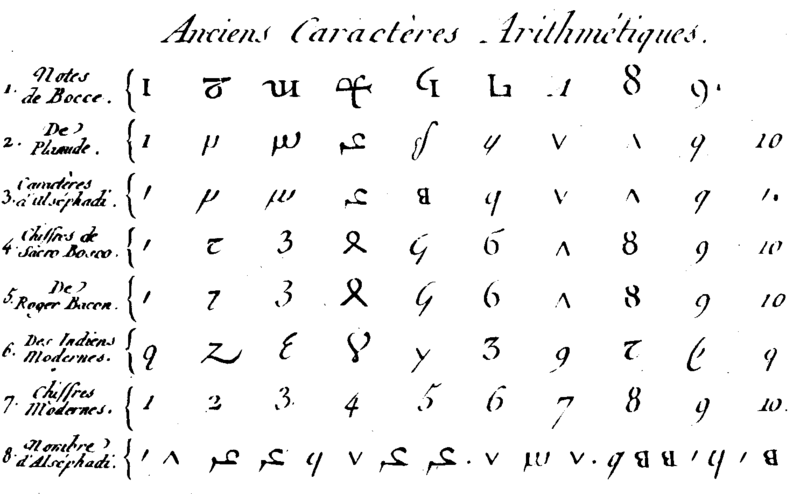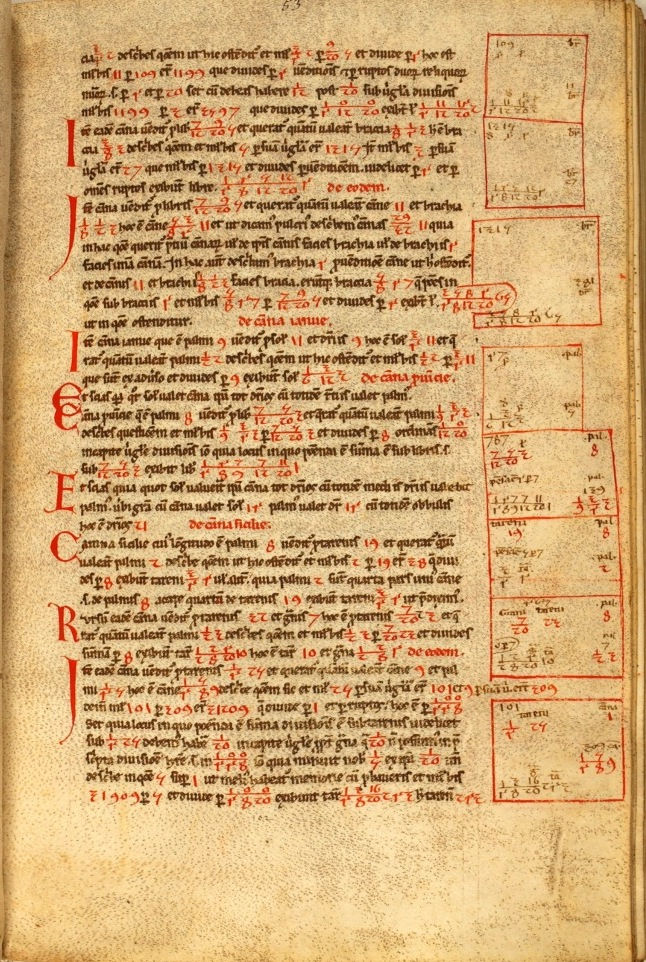The New Math
- Bruce Boyce

- May 29, 2021
- 5 min read
Updated: May 15, 2022

"I have often been asked by certain youths in whom I have much interest, and who look forward to mercantile pursuits, to put into writing the fundamental principles of arithmetic, commonly called abacus."
Author of the Treviso Arithmetic, 1478
"Two merchants, Sebastiano and Jacomo, enter into partnership. Sebastiano put in 350 ducats on the first day of January, 1472; Jacomo put in 500 ducats, 14 grossi on the first day of July, 1472. On the first day of January, 1474 they find that they have gained 622 ducats. Required is the share of each." This is an example of many of the word problems found within the text of the Treviso Arithmetic. The author goes into detail on how to solve this problem. One is to convert everything into grossi. (There are 24 grossi to a ducat.) Next, one multiplies the amount each merchant invested by the length of time. The percentage of each man's share is then derived by dividing their total by the combined total amount. Each percentage is then applied to the 622 ducats of profit so that each man gets their appropriate share.
The book has no actual title, and there is no known author of the text. Treviso Arithmetic's title comes from the fact the book was printed in the Italian town of Treviso, northwest of Venice. Venice, in the 15th century, was at its peak as a commercial powerhouse. The Treviso Arithmetic was written to teach the practical application of mathematics to would-be merchants. It is considered the earliest printed textbook on mathematics. The author provides instruction on basic mathematical operations. Yet, these methods were only beginning to be accepted throughout Europe, and the text was born from a mathematical revolution that occurred two centuries prior.

Prior to the 13th century, Europeans clung to the numeric system they inherited from Rome. The Roman system was base-ten, but there were no place value notations. Instead, there are symbols, or glyphs, that have fixed values. The powers of ten are built into the system. Zero was not used as a placeholder, nor was there a glyph for zero. The Romans used the word nulla - none - instead of zero. They handled fractions by using duodecimal - dividing by twelve- rather than decimal. This made it easier to work with the common fractions of 1/3 and 1/4. The system made addition and subtraction a clumsy affair, but it was nearly impossible to do multiplication and division. Therefore, for much of the Roman period and after, an abacus was used as a calculation tool. In Rome, the abacus was a table or board with several grooves along which counters were moved. The counters were originally pebbles - calculi in Latin. (Whence the words calculation and calculus.) Roman numerals were great for recording, but if one wanted to perform calculations, they needed to seek out someone who knew how to work with an abacus. During the greater part of the Medieval period, mathematics was confined to a select few in universities and government positions. This was a crude and inefficient way of doing business.
In 1202, Leonardo da Pisa wrote Liber Abaci - "Book of Calculations." Leonardo is better known by his nickname of Fibonacci. (The same Fibonacci as in the famous Fibonacci Sequence.) His nickname comes from the first line of his manuscript in which he refers to himself as filius bonacci - "son of Bonacci." In his work, Fibonacci introduced Europe to what we call Arabic numerals.

The Arabs had been using their numerals for a few centuries before Fibonacci, and they borrowed them from much older number systems originating in India. The Hindu-Arabic numbers can be traced back to the Brahmi numerals of the 4th century BCE. Around the 4th century CE, Hindu scholars refined the numeric system to include positional notations and the use of zero. This knowledge was transmitted to the Arabic world by such mathematicians as Al-Khwarizmi and Al-Kindi in the 9th century CE. This system simplified basic operations such as multiplication and division. From this, the Arabs developed the basis of algebra. Arab mathematicians helped simplify working with fractions, which included utilizing decimals in the place of fractions. It is the beginning of how we write numbers and do arithmetic today.

Fibonacci's father was a trade representative for the city of Pisa, and he was stationed in the North African port of Bugia, which is in modern Algeria. As a young boy, Fibonacci spent time with his father in Bugia. Here he was exposed to both the Hindu and Arabic mathematics. His book would bridge the Arabic and Western worlds and cultures, and he showed the algebraic methods that are a crucial part of modern science and engineering. Beyond this, Fibonacci explained these methods in terms that common people would understand. The first edition of Liber Abaci was highly detailed; therefore, Fibonacci released a simplified version to reach Pisa's traders and commercial people. No longer would mathematics be an arcane subject known only by a relatively small number of scholars. In doing so, he initiated a revolution in thought. The timing was no coincidence.
Italy of the 13th century was experiencing a rebirth; a rebirth spurred on by the rise of capitalism. Old trade routes were being reopened with the Far East. Venice and Florence were becoming established commercial centers of trade and finance. Italian bankers financed wars, building projects, and the lifestyle of the courts of Europe. Currency of all kinds was exchanged in ports throughout the Meditteranean. Business transactions were increasingly more complex. The use of Roman numerals was becoming unwieldy. Conversely, the Arabic system eliminated the need for an abacus. It allowed merchants and bankers to make calculations more easily in their heads or on slips of paper. Merchants started using + and - for overweight and underweight shipments, and this led to their use as the symbols of addition and subtraction. (Later on for positive or negative charges.) In 1484, Nicolas Chuquet, a French doctor, introduced the use of the comma to separate zeros in large numbers to make them more readable.

Within decades, the new mathematical system spread. Hundreds of textbooks were being written, and the advent of the printing press facilitated the transmission of mathematical knowledge, the Treviso Arithematic among them. These works were written in the vernacular so that anyone could understand them. The commercial sectors found the new numbers to be practical, and their use immediately spread. These numbers brought math out of universities and out onto the streets and shops of Europe. A person no longer needed a university education to open and operate a business. Ordinary shopkeepers and clerks were able to do their own bookkeeping and accounting, and the new math allowed for the expansion of banking and insurance. It made the once difficult tasks of converting currencies, calculating interest, and determining profit and loss more efficient.
Fibonacci, along with the commercial interests of Italian bankers and merchants, ushered in a mathematical revolution in Europe that forms the foundation of the modern math we learn today in school. Some compare the impact to that of the personal computer. In his work Science in History, historian J.D. Bernal sums up the introduction of Arabic numerals as having "almost the same effect on arithmetic as the discovery of the alphabet on writing."
Further Reading
Capitalism and Arithmetic: The New Math of the 15th Century: Frank J. Swetz
The Man of Numbers: Fibonacci's Arithmetic Revolution: Keith Devlin




As with any movie I watch, I spot watches with great hesitancy and caution, for we know that show business is show business and less-than-legitimate watches show up all the time. It is part of the reason I link have started working link in movies and link television to consult on sourcing watches for various productions. Watch spotting is fun, and I want the watch we see to be as cool – and real – as we think it is. This brings me back to the Oscars last Sunday.